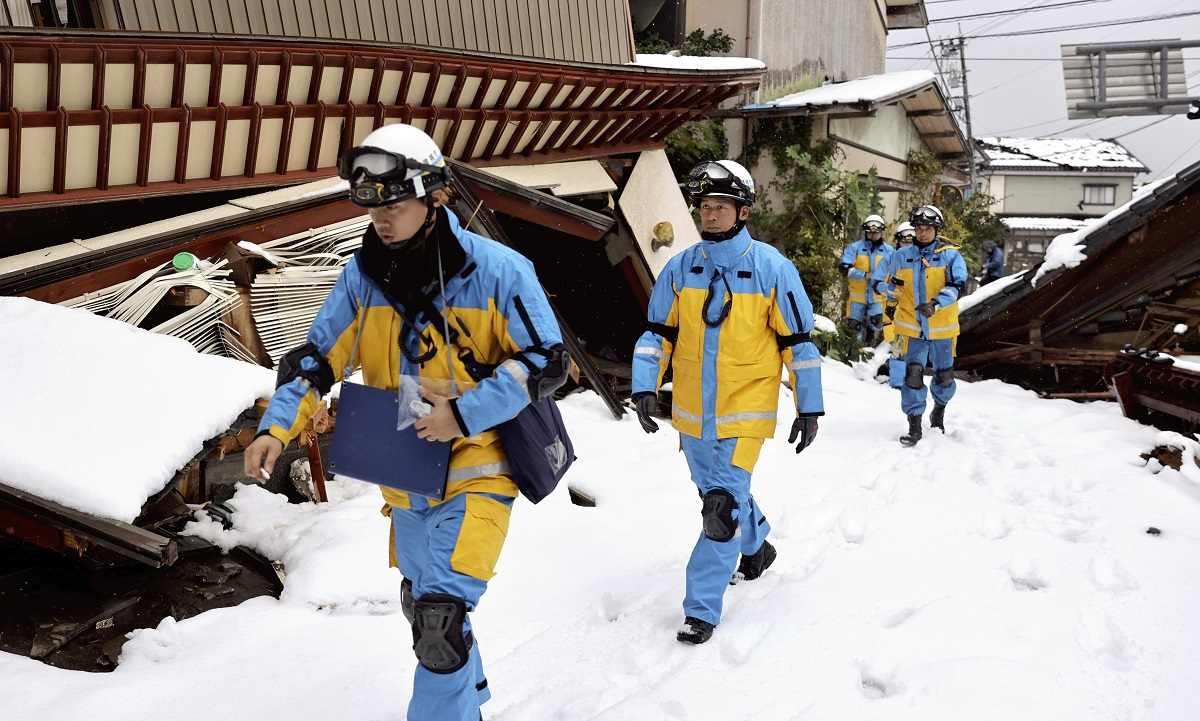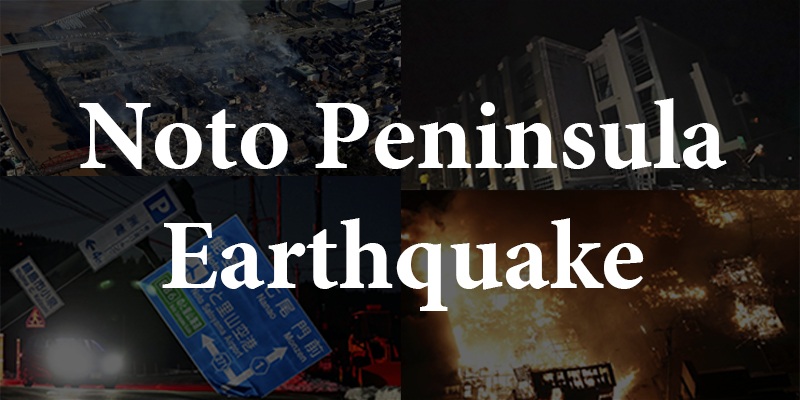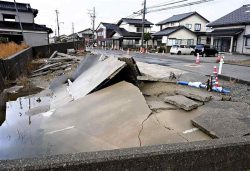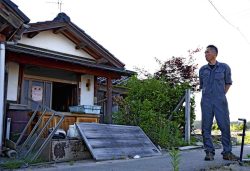Authorities Labor to Confirm Status of Unaccounted-For after Japan Noto Peninsula Earthquake; List Remains Long as Manpower Shortages Slow Efforts

Police officers head to conduct search operations in Suzu, Ishikawa Prefecture, on Tuesday.
16:10 JST, January 10, 2024
KANAZAWA — In a bid to swiftly identify survivors of the Noto Peninsula Earthquake, Ishikawa prefectural authorities have been releasing the names of people whose safety is still unaccounted for after the disaster.
The list has helped to confirm some people’s whereabouts, but new names continue to be added and the list remains long. Manpower shortages at local government offices are also delaying assessments of the damage.
“Why my name?” a man in his 70s said in Wajima, Ishikawa Prefecture, surprised to hear from a friend on Sunday that he was on the list of unaccounted-for persons released by the prefectural government the day before.
The man’s house was destroyed by the quake, and he had been staying in his car at a nearby evacuation shelter. His name was quickly removed from the list after he informed an acquaintance on the city council that he was safe.
Ishikawa Prefecture’s standards for publishing names and other information about unaccounted-for persons and others at the time of a disaster stipulate that people’s names, addresses, age and gender will be made public in due course, starting from about 48 hours after the disaster.
A list of 15 people was first released at midnight on Jan. 3, or 55 hours after the earthquake.
Unaccounted-for persons are people who may have been caught up in the disaster and cannot be contacted. The Ishikawa prefectural government is compiling the list based on reports from 19 cities and towns in the prefecture, as well as inquiries from other prefectures.
Since Friday, the list has been updated twice daily at 9 a.m. and 2 p.m. Names are deleted in the following three situations: Confirmation of safety based on a report from the person, their family or acquaintances; reclassification as “missing” after they are confirmed to have been caught up in the disaster; or confirmation of death.
In the case of the Noto disaster, many names are being deleted after confirmation that those people are safe. The prefectural government’s crisis management supervisor stressed the positive effect of publicizing the list, saying, “It is definitely accelerating our efforts to grasp the actual extent of the damage.”
New names added
In past disasters, the number of people who were unaccounted for decreased over time, but this time, new names are still being added to the list a week after the earthquake.
As of 2 p.m. on Monday, the number of unaccounted-for persons rose to 323, up more than 200 from 9 a.m. the same day. However, the number decreased to 120 as of 9 a.m. on Tuesday.
Reports from Wajima accounted for the majority of the increase and decrease. The municipal government was short of staff due to the disaster, and it was delayed in its efforts to respond to information received about unaccounted-for persons and verify their names against the resident registry.
More support staff have been secured from the prefectural government and other entities, so the municipal government is gradually catching up on the work. Also, more names have been announced in recent days, which has helped confirm the whereabouts of some residents.
However, the poor communication environment in affected municipalities has not improved, making it difficult to confirm the whereabouts of unaccounted-for persons. In tsunami-hit Suzu, the actual extent of the casualties has not been fully established.
The earthquake struck during the New Year’s holidays, when many people from other parts of the nation were in Ishikawa Prefecture for a hometown visit or a vacation. It is also a challenge to identify and publicize the names of unaccounted-for persons from other prefectures.
For people whose whereabouts are unknown after visiting their hometowns in Ishikawa Prefecture, the prefectural government is listing the addresses from their hometowns rather than their current addresses. For example, a person visiting Wajima from Tokyo will be listed as “Wajima,” so the person or their acquaintances may think that the person listed is someone else with the same name.
Names of deceased not disclosed
The prefectural government has not disclosed any information regarding the deceased, including their names and ages, as its standards stipulate that the disclosure of such information requires the consent of the family. “We can’t simply release the names because of privacy concerns,” Ishikawa Gov. Hiroshi Hase said Tuesday.
However, if the names of deceased persons are not made public, their relatives and acquaintances will be unable to find out what happened to them, which could lead to a flood of inquiries to local governments and other authorities.
How to handle information regarding the deceased is another issue that needs to be addressed.
"Society" POPULAR ARTICLE
-

M4.9 Earthquake Hits Tokyo, Neighboring Prefectures
-

M7.5 Earthquake Hits Northern Japan; Tsunami Waves Observed in Hokkaido, Aomori and Iwate Prefectures
-

Tsukiji Market Urges Tourists to Avoid Visiting in Year-End
-

Israeli Tourists Refused Accommodation at Hotel in Japan’s Nagano Pref., Prompting Protest by Israeli Embassy and Probe by Prefecture
-

M5.7 Earthquake Hits Japan’s Kumamoto Pref., Measuring Upper 5 Intensity, No Tsunami Expected
JN ACCESS RANKING
-

Keidanren Chairman Yoshinobu Tsutsui Visits Kashiwazaki-Kariwa Nuclear Power Plant; Inspects New Emergency Safety System
-

Imports of Rare Earths from China Facing Delays, May Be Caused by Deterioration of Japan-China Relations
-

University of Tokyo Professor Discusses Japanese Economic Security in Interview Ahead of Forum
-

Japan Pulls out of Vietnam Nuclear Project, Complicating Hanoi’s Power Plans
-

Govt Aims to Expand NISA Program Lineup, Abolish Age Restriction
























